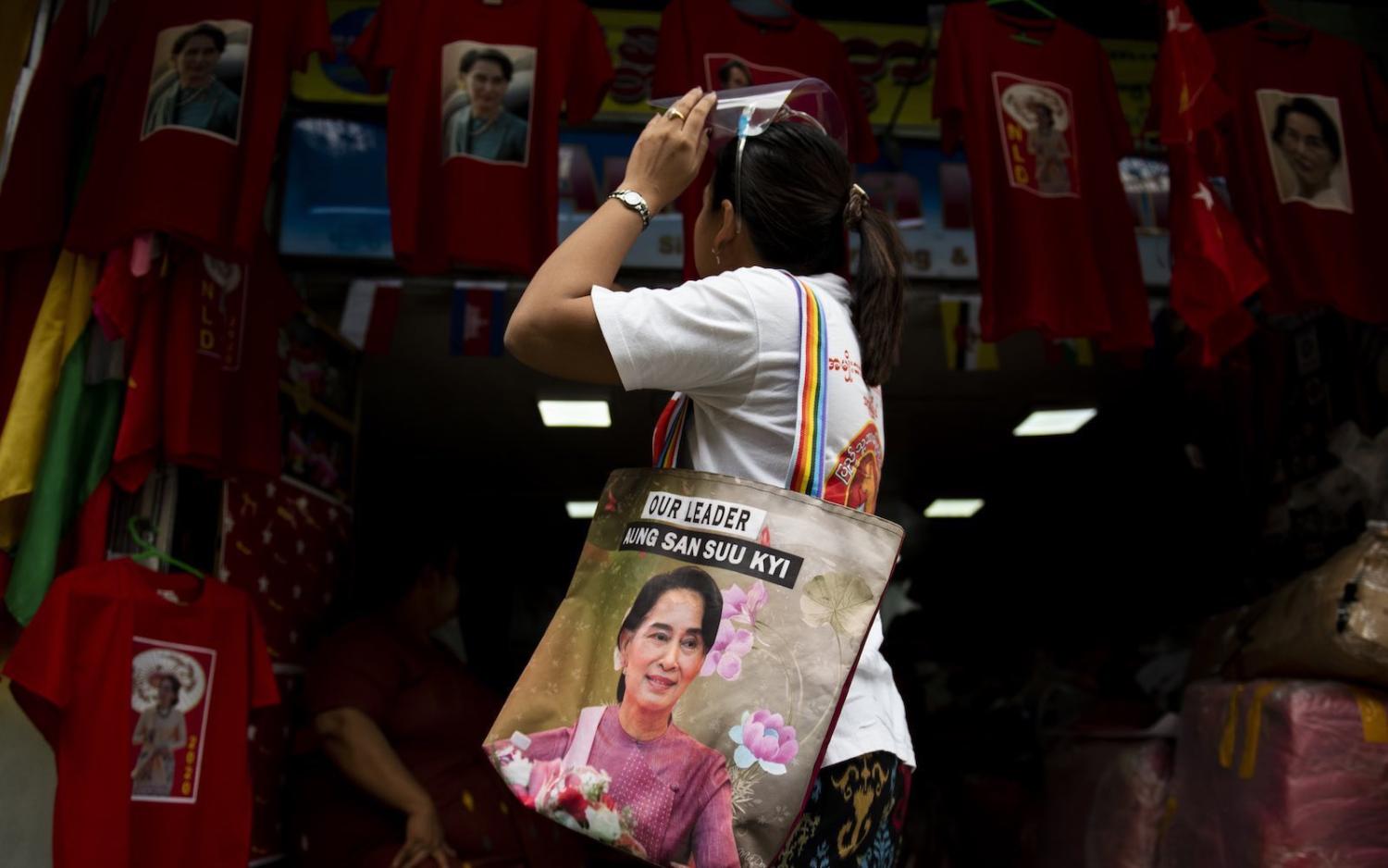Myanmar’s next general elections are planned for 8 November, with more than 1100 parliamentary seats to be decided in the Lower House, Upper House and across state and regional parliaments, and for ethnic entities. The National League for Democracy (NLD) and the Army-aligned Union Solidarity and Development Party (USDP) are the two most prominent parties to contest the elections, alongside several ethnic parties and other newly emerging challengers.
The elections will be a major test for State Counsellor Aung San Suu Kyi, once a democracy and human rights icon and now the face of a regime charged with genocide for its treatment of the Rohingya ethnic minority.
The ruling NLD, led by Suu Kyi, is said to have decided to contest all the parliamentary seats alone, whereas the opposition USDP is exploring avenues for alliances but has gained none so far. In the previous elections in 2015, most of political groups focused on state and regional seats, leaving the main parliament largely for NLD and USDP to contest. This time, however, things will be different, as the newly emerging political parties and the ethnic parties have formed alliances. Thus, neither main party is expected to win enough seats to form the government, putting the other parties in a “kingmaker” position.
In 2015, the NLD won a landslide victory by securing 390 out of the 498 seats for both houses of the Union Parliament. The victory was accomplished through promises of constitutional amendments for democratisation, resolution of ethnic conflicts and economic reforms. The NLD has failed to deliver on any of these fronts – no constitutional reforms have been achieved, and none were even attempted until last year, and then largely for the sake of appearances. This was perhaps a result of the pragmatic relationship between the government and the military that dictates neither side must push one’s interests too hard.
Aung San Suu Kyi is still the most popular leader in the country, and NLD remains well positioned to grab the biggest share of total seats, although perhaps still short of the required majority to form government.
The peace process also remains stalled. The 21st Century Panglong Peace Conference, started in 2016 to build a dialogue between ethnic groups, met for the fourth time last week, but it has made few strides, and it remains hindered by continuing conflicts in several ethnic areas.
Economically, it was not until last year that the government made serious efforts to accelerate reforms. Despite some attempts to encourage investment in the country, factors such as obsolete regulations, insufficient infrastructure and the government’s tarnished international reputation have kept companies and investors from engaging. The European Union is also reportedly mulling trade sanctions over the Rohingya crisis in Rakhine state, potentially stripping Myanmar of tariff-free access, which could include the textile industry, which would jeopardise hundreds of thousands of jobs – many of them in areas that overwhelmingly voted NLD in 2015, such as Yangon and Mandalay.
Also, the emergence of new parties such as the People’s Party and the United Political Parties Alliance (UPPA) can pull votes that traditionally went to the NLD. The People’s Party was founded in 2018 by Ko Ko Gyi, one of the leaders of the 1988 student protests against military rule. Many students at the time fled to the border areas or across the border for safety. When they returned, they gravitated to the NLD, and volunteered and worked for the NLD candidates in 2015, but their efforts went largely unappreciated. The UPPA, meanwhile, was launched in February this year by nine political parties with the aim to bring change through “collective strength”.

All these factors will likely keep the NLD from repeating its landslide victory of 2015. Nevertheless, Suu Kyi is still the most popular leader in the country, and NLD remains well positioned to grab the biggest share of total seats, although perhaps still short of the required majority to form government.
The USDP too, will also find its support base of military sympathisers split because of the newly founded parties such as the Union Betterment Party (UBP) and Democratic Party of National Politics (DPNP). Both have been initiated by former army generals closely involved in the creation of the USDP.
The alliance formed by the ethnic parties, which in the 2015 elections were fragmented and largely uninterested in contesting for the main union parliamentary seats, is another remarkable factor in this year’s elections. Except for the Arakan National Party (ANP) and the Shan Nationalities League for Democracy (SNLD), most parties within ethnic groups – the Karen, Mon, Chin, Kachin and Kayah – have formed a United Front in a bid to win majorities in their state parliaments, and to secure most of the national parliament seats in their states. In their view, the NLD has not done enough for the development of their respective ethnic states, and therefore an alliance is the best path either to secure a majority for forming a government themselves or to build a coalition government with whoever can guarantee ethnic rights and seek to form federal states in 2020. According to one estimate in a media report in Myanmar, NLD may secure 40% of the seats, while the ethnic parties may secure 20%, opening the way to a majority.
Expectations of change in Myanmar’s political landscape have long failed to match reality, but it’s certain that this year’s election will be a very different exercise than the last time around.

